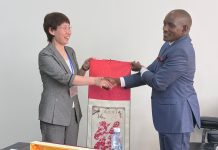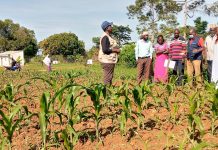By David Mwanje
KAMPALA— A new study from Victoria University in Uganda, led by Dr. Lillian Tamale, has found a better way to detect tuberculosis (TB) using a simple artificial intelligence (AI) tool called VGG16. This tool can spot TB in chest X-ray images with 99.4% accuracy, doing better than more complicated AI systems. The study, published in JMIR Medical Informatics, offers hope for areas with limited medical resources, where TB is a major problem. The World Health Organization says TB affected 10.6 million people and caused 1.3 million deaths worldwide in 2024.
Dr. Tamale worked with Mr. Alex Mirugwe from Makerere University and Dr. Juwa Nyirenda from the University of Cape Town. They tested six AI systems using 4,200 chest X-ray images (700 with TB and 3,500 without). VGG16 was the best, scoring high on accuracy and other measures while needing less computer power. This makes it perfect for places like rural Uganda, where the Ministry of Health reported 91,000 new TB cases in 2024. The study also found that common AI tricks, like rotating images, didn’t help, meaning the data was already good enough.
This tool could help Uganda’s “TB Free Uganda Campaign”, which tested over 500,000 people in 2024 and found 15% more TB cases than the year before, according to the Ministry of Health. VGG16 could make mobile X-ray units faster by reducing the need for expert doctors, who are hard to find in rural areas. In India, where 2.78 million TB cases were reported in 2024, a similar program is testing AI for X-ray screening, and VGG16 could fit right in.
“This tool makes healthcare easier for everyone,” said Dr. Tamale. “VGG16 lets small clinics with basic equipment diagnose TB quickly and correctly.” The study’s data is free to use on Kaggle, and an early version was shared on medRxiv in August 2024, exciting researchers worldwide. Pilot projects are planned in Ethiopia and India. With the WHO’s 2024 report calling for better tools to fight TB by 2030, Dr. Tamale’s work at Victoria University shows how Africa is helping solve global health problems.























